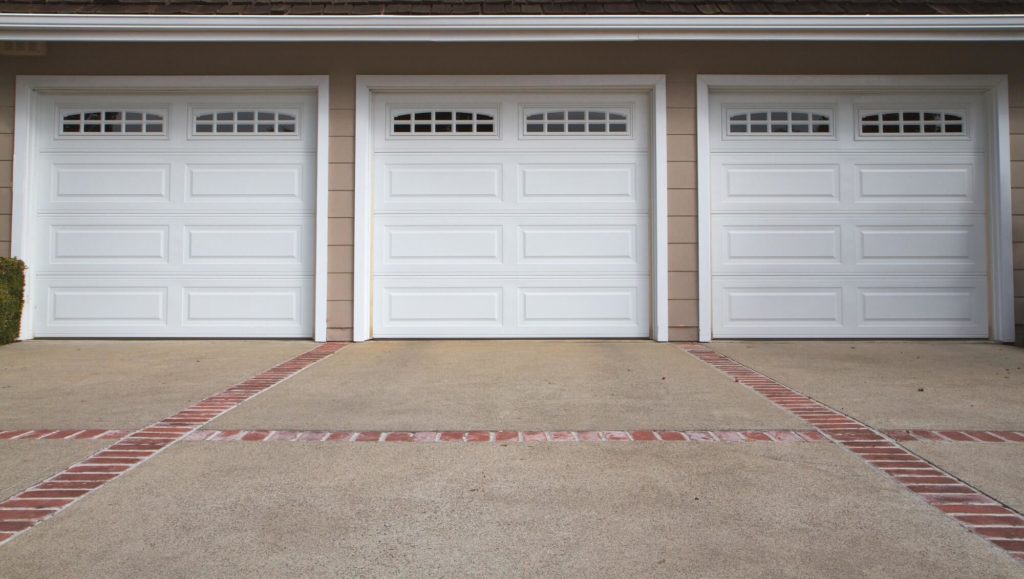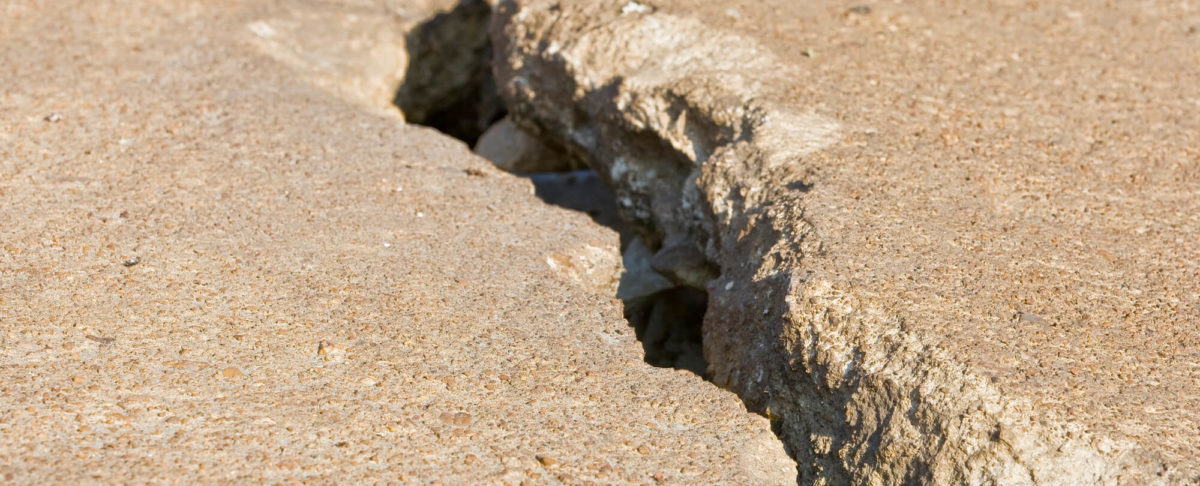Heat and strong UV rays from the sun can be incredibly harmful to both concrete and asphalt lots and driveways. The high temperatures and humidity of the summertime can warp your pavement and lead to some worrisome troubles down the line.
Some of the most common structural pavement issues residential and commercial property owners face in the summer months include cracking, potholes, sinking, and water accumulation. Each of these problems can be detrimental to the function and aesthetics of the affected parking lot or driveway.
Recognizing these prevalent pavement problems before they become overwhelming will help to prevent further inflicted damage. It is essential to run through this summer pavement maintenance checklist to ensure that your driveway or lot is functioning to its best ability throughout the year.
1. Look for Cracks
- Concrete pavement is more likely to experience cracking, but asphalt can as well.
- Cracks can expand and grow, allowing water to seep in and accumulate.
- Water accumulation can lead to mold and mildew growth in summer humidity.
- As cracks expand, they create extensive networks or webs of cracks throughout the surface of your pavement, leaving it damaged and unsightly.
2. Seal Away Heat Damage
- Heat can soften, warp, or expand unsealed asphalt.
- Sealing pavement every 2-3 years can protect from harmful UV rays.
- Sealing also protects from cracking and water accumulation.
- When properly sealed and maintained, a sealed asphalt driveway can last up to 50 years.
3. Look for Pooling Water
- Pooling water can cause further damage like cracking, crumbling, or potholes.
- Pooling water is a symptom of repeated weight or pressure in the same spot, such as where a car is parked or where a basketball hoop sits.
- Use Infrared Asphalt Repair to spot treat sunken areas of pavement.
4. Avoid Oil Leakage
- Oil leakage from parked cars, motorcycles, or boats can be damaging and dangerous to the pavement surfaces.
- Not only is it flammable, but diesel fuel can corrode asphalt very quickly.
5. Move Your Vehicles
- Avoid repeatedly parking cars or boats in the same spot in a driveway.
- Repeated heavy pressure or weight on one spot can cause sinking or cracks.
6. Identify Discolorations
- Older, damaged asphalt may appear white-ish in color.
- Replace old asphalt when discoloration becomes prevalent.
7. Are There Any Potholes?
- Look in areas where there may be sinking or unevenness.
- Check around areas where vehicles sit repeatedly.
- Potholes may appear in areas where water is pooling, as it weakens the asphalt.
8. Look for Loose Gravel
- Loose gravel can indicate a structural failure within the pavement.
- If loose gravel, rocks, or sand become prevalent, it may be time for professional replacement or repair of your concrete or asphalt pavement.
9. Check Around the Garage
- One of the biggest problem areas for homeowners is where the driveway meets the garage. Sinking and buckling of the pavement can be prevalent here.
- This may be a symptom of design problems or inadequate excavation refilling during the construction of the home.
- Sinking near a garage can be repaired without replacing the entire driveway.
10. Inspect the Edges
- Another problem area is the edges of the pavement, where asphalt or concrete meets the lawn.
- Poor water drainage can wash away the pavement’s sub-base near the edges of the driveway or lot, especially if on an incline.
- This can also be caused by heavy vehicles sitting on the hot pavement for too long.
Summer Maintenance Solutions
If any of these pavement issues have befallen you, it may be necessary to replace or repair your current blacktop. When these poor pavement conditions are not addressed and resolved, further damage will be inflicted. There may also be underlying sub-base issues to address professionally, otherwise, your pavement will continue to deteriorate.
Luckily, there are a variety of solutions available to resolve the pavement issues at your home or business. Whether you have asphalt or concrete paving, repairing and maintaining the surface is integral to its continued durability.

Prevention
The first and most important maintenance solution for concrete and asphalt pavement is prevention. Understand the possible issues that can be harmful to your property and take action to prevent them.
This means regular checks, cleaning, and maintenance of your pavement. Running through this checklist every few weeks in the summer can be extremely beneficial.
With proper maintenance and sealing, a piece of asphalt pavement can last from 30 to 50 years. Concrete is also an extremely popular and durable material for paving when cared for correctly.
Remembering to move your heavy cars and vehicles is also an extremely important preventative measure. Repeated heavy pressure on one spot of pavement can lead to multiple issues. Change up your parking space every so often to ensure this does not happen.
Spot Correction
One of the most rampant pavement problems is cracking. Cracking can become extensive and continue to degrade the surface of the pavement if not taken care of quickly and properly. Home and business owners can easily deal with pavement cracking by heading to their local home improvement store.
Many home improvement stores carry high-quality asphalt driveway crack fillers that can be easily used. Potholes can also be spot treated by using cold-mix asphalt, also available in most home improvement stores.
Cracks should be taken care of as soon as they appear. However, if cracking or pothole damage is extensive, professional repair or replacement may be necessary.
Calling the Professionals
Some issues may require professional expertise to handle. For instance, if you have noticed sinking, buckling, or pooling water near your garage entrance, it may be time for a pavement specialist to come to take a look, as this could indicate a sub-base problem that will require extensive repairs.
Pavement repair technology has improved rapidly in recent years. The use of infrared asphalt repair technology is useful in commercial and residential applications. It can help treat major cracking and potholes or sinking.
While replacing pavement may seem like an intimidating task, professionals can make it incredibly simple and streamlined. Old asphalt can even be recycled, making an environmentally friendly and economical choice.
In Conclusion
Whether your pavement is brand new or has been installed for years, it is necessary to take preventative measures to reduce damage to the structure. Working with a pavement professional can help you to decide which pavement option is best for you and your home or business.
Asphalt is a popular pavement choice due to its durability, functionality, and curb appeal. Another popular pavement choice is concrete for its aesthetic appeal and low maintenance costs. A paving specialist can help you determine which material is best for your sub-base or location. Whatever paving material you choose, understanding the issues that can arise without proper maintenance will help increase the longevity of the pavement.
Summer heat, humidity, and water accumulation can all damage pavement extensively if not treated properly right away. Each summer, check your pavement for the aforementioned issues and address them as they arise. Proper preventative maintenance can keep your pavement looking and functioning accurately for years to come.




